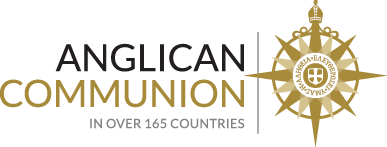“It is simply not true to say that ACNA is part of the Anglican Communion,” he [Idowu-Fearon] said. “To be part of the Communion, a province needs to be in communion with the See of Canterbury and to be a member of the Instruments of the Communion. ACNA is not in communion with the See of Canterbury—and has not sought membership of the Instruments.” Idowu-Fearon added that “There is a long-standing process by which a province is adopted as a province of the Communion… ACNA has not gone through this process.” <http://www.anglicanjournal.com/articles/acna-not-province-anglican-communion-secretary-general-clarifies/> Accessed 13 Sep 2017
The Secretary General’s statement that The Anglican Church in North America (ACNA) is not a province of the Anglican Communion is misleading at best. It ignores the very process of recognition of the Anglican Church in North America by some GAFCON provinces as early as July 2009. It ignores the public and published recognition of Archbishop Foley Beach as “a fellow Primate of the Anglican Communion” by those Primates of the Anglican Communion who installed him as the second Archbishop of the Anglican Church in North America on October 9, 2014. The Secretary General ignores the recognition of the Anglican Church in North America as a “partner province” of the Global South by the Primates of the Global South in their October 2016 Communique.
In other words, the process of recognition of the Anglican Church in North America as a member Church within the Anglican Communion is already a 10-year process initiated by Primates of the Anglican Communion, representing Churches of the Anglican Communion, and in keeping with their “long-standing” procedural authority to do so. It’s certainly in the Secretary General’s interest in his Report to take pride in his achievement in helping to form a new ‘province” of the Anglican Communion in Sudan. But that does not give him the right to take pride in misstating who decides membership in the Anglican Communion—especially by usurping the rightful authority of the Primates to do so while they are in the middle of an already ongoing process of recognition.
Perhaps the Secretary General is worried that the process has become so far advanced already that it would be difficult, if not impossible, to incorporate any of the ACC’s “suggestions” into the governing documents of the Anglican Church in North America. That’s ok. We can assure the Secretary General and the ACC that we have consulted some of the finest canonical minds in the Anglican Communion, as well as the widest possible range of governing documents among the Churches of the Anglican Communion, in shaping our own. The recognition by the Primates and Provinces of the numerical majority of Anglicans within the Communion testify that we have done our job well.
So, let’s look at the authoritative documents of the Anglican Communion that address the question of membership.
- Recent events and publications question the necessity of relationship with the See of Canterbury as an essential prerequisite for membership
Yes, it’s true that Resolution 49 of Lambeth Conference 1930 defined membership in the Anglican Communion as a fellowship, within the one Holy Catholic and Apostolic Church, of those duly constituted dioceses, provinces or regional Churches in communion with the See of Canterbury.
However, the 2005 decision of the Church of Nigeria, the largest province of the Anglican Communion, to change its Constitutional definition of membership in the Anglican Communion from “relationship with the See of Canterbury” to relationship with those who uphold the historical formularies of the Anglican Communion (The Bible, the 39 Articles and the BCP 1662 and Ordinal) sent a shock wave through the Anglican Communion that Anglican identity and membership is in fact based on a common confession– and not geography or mere “bonds of affection.”
This in turn shaped the definition of membership in the Anglican Communion in the Principles of Canon Law Common to the Churches of the Anglican Communion (London: Anglican Communion Office, 2008). According to Principle 10.4 of the PCLCCAC, “the relationship of ecclesial communion within the Anglican Communion is based on the communion of a church with one or more of the following (a) the See of Canterbury…; or (e) all churches which profess the apostolic faith as received within the Anglican tradition.” (emphasis added).
Clearly, relationship with the See of Canterbury is no longer the prerequisite that it was in 1930 for membership in the Anglican Communion.
And, in fact, the Archbishop of Canterbury has never refused to recognize as a member of the Anglican Communion any Church which has been moved forward by 2/3 of the Primates to the ACC for addition to the Schedule of Churches in the Anglican Communion. Whatever approval the See of Canterbury offers comes at the end of the process—not at the beginning.
- According to its Constitution, the ACC has only an advisory role in the formation and recognition of new Churches in the Anglican Communion
Under Article 5 of the Constitution of the Anglican Consultative Council,[1]which enumerates the specific powers of the ACC, Article 5.3 provides that the Council has power “To advise on inter-Anglican, provincial and diocesan relationships, including the division of provinces, the formation of new provinces and or regional councils, and the problems of extra-provincial dioceses.”[2] (emphasis added). It is simply misleading, publicly or privately, to suggest that the ACC has anything more than an advisory role in the formation of new provinces. This is borne out by the very language of the oft-referenced Resolution 12 of ACC-10 regarding the formation of new provinces (see below).
Article 7 of the Constitution describes the Structure of the ACC, and defines membership within the Anglican Communion as those Member-Churches “which are included in the Schedule to these Articles”[3] However, Article 7.2 does give the Standing Committee of the ACC (aka The Standing Committee of the Anglican Communion) permission to add a Church to the Schedule of Member-Churches with the assent of 2/3 of the Primates:
“…with the assent of two-thirds of the Primates of the Anglican Communion (which shall be deemed to have been received if not withheld in writing within four months of the date of notification) the Standing Committee may alter or add to the Schedule.”[4] (emphasis added).
This language leads to two observations. The initiative of the Standing Committee of the Anglican Communion is permissive only. It is not required beforehand for the formation of a new province. Secondly, the ultimate authority in any case rests in the assent of two-thirds of the Primates of the Anglican Communion. In other words, the ultimate authority for forming a new province/Member-Church of the Anglican Communion rests with the Primates, and not with the ACC or its Standing Committee.
- Resolution 12 of ACC-10 does not give jurisdiction to the ACC to create or withhold recognition of a new Church within the Anglican Communion
The Secretary General is in error when he claims that a new Province must apply to the ACC, much less “the Instruments,” before it can become a province. Nothing could be further from the truth. There are no official regulations guiding the formation of a province—merely suggestions. In 1996 ACC legal advisor (now Canon) John Rees said the ACC-10 guidelines were not intended to be a legal requirement but rather a flexible aid in provincial formation. The Anglican Communion News Service echoed Rees’ statement when it reported that the ACC-10 guidelines would “ensure new Provinces the opportunity to benefit from the advice of the ACC and the experience of other Provinces” but were not necessary steps for creating new provinces.[5]
In fact, ACC-10 Resolution 12 restated the advisory role of the ACC in making recommendations (rather than directives) on the formation of new provinces in the following language:
“Resolved that this Council (1) affirms its commitment to assisting in the creation of new Provinces… (2) urges those involved in promoting the creation of new Provinces to consult the council through its Secretary General… (3) affirms the guidelines set out in previous Council resolutions, and (4) adopts the additional guidelines as set out in the appended schedule.”[6](emphasis added)
The language of the additional guidelines appended in ACC-10 Resolution 12 is not mandatory but rather permissive, as demonstrated in the following language: “…(2) The proposal for a new province…might (and ideally would normally) be accompanied by an invitation to the ACC for a visit by the Secretary General… to discuss the application [of these guidelines] to the specific situation in the local area…”; (4) “…The ACC can provide significant assistance in advising both on the content of constitutions… and on the arrangements that may need to be made for that stage of the discussion…” and (5) “the Secretary General [of the ACC] may, in consultation with the Standing Committee as appropriate, appoint a committee, or call upon individual consultants, to make observations on its behalf for further consideration by the promoters and their advisors.[7] (emphasis added)
Finally, ACC-10 reaffirmed the authority of the Primates to recognize Provinces when, in Resolutions 1 and 2 welcoming Mexico and SE Asia as new Provinces, it began both resolutions with this declaration: “Resolved that the Primates having assented, this ACC-10 meeting in Panama welcomes…”
- The Primates have unconditional authority by 2/3 assenting to recommend a Church be added by the ACC to the Schedule of Churches in the Anglican Communion.
The Guidelines set out in previous ACC Resolutions, affirmed by ACC-10 Resolution 12, include the following:
- in 1993, at a joint meeting of the Primates of the Anglican Communion and the Anglican Consultative Council, Resolution 47 regarding the new Provinces of Burundi, Rwanda and Zaire “requests the Primates to add them to the list of Member Churches in the Anglican Communion,” and
- Resolution 48 regarding the new Province of Korea “requests the Primates to add it to the list of member Churches of the Anglican Communion following its inauguration.”
In both Resolutions, the Council explicitly recognizes the Primates as having the authority to determine the membership of the Anglican Communion—and this is the very fundamental guideline affirmed in ACC-10 Resolution 12. Moreover, this is also the same express condition precedent to the Standing Committee of the Anglican Communion adding a Church to the Schedule of Member-Churches under Article 7.2 of the ACC Constitution.
Conclusion
The Secretary General’s declaration that Anglican Church in North America is not a Church in the Anglican Communion is at best premature. At worst, it is misleading and characteristic of the increasing overreaching of the ACC in its jurisdiction. The Anglican Church in North America is already in a 10-year process of recognition by the Primates, who have the jurisdiction to extend such recognition. The ACC may offer advice if requested. They have not been requested by the Primates recognizing The Anglican Church in North America to do so. The Secretary General should work with the Primates rather than seeking to usurp their authority.
The Rev. Canon Phil Ashey is President & CEO of the American Anglican Council.
[1]The Constitution of the Anglican Consultative Council, as incorporated under the UK Charities Act 2006 (Companies House UK: Company No. 7311767, 12 July 2010), < http://www.anglicancommunion.org/media/39479/the-constitution-of-the-anglican-consultative-council.pdf > Accessed 19 Sep 2017
[2] Ibid., at 4.
[3] Ibid., at 7.
[4] Ibid.
[5] CEN, December 11, 2008, “Canterbury won’t block or bless new province,” < https://geoconger.wordpress.com/?s=John+Rees&searchbutton=go%21 > Accessed 17 September 2017
[6] ACC-10 (1996: Panama City), Resolution 12, “Creation of new Provinces,” < http://www.anglicancommunion.org/structures/instruments-of-communion/acc/acc-10/resolutions.aspx#s12 > Accessed 19 September 2017.
[7] Ibid.



